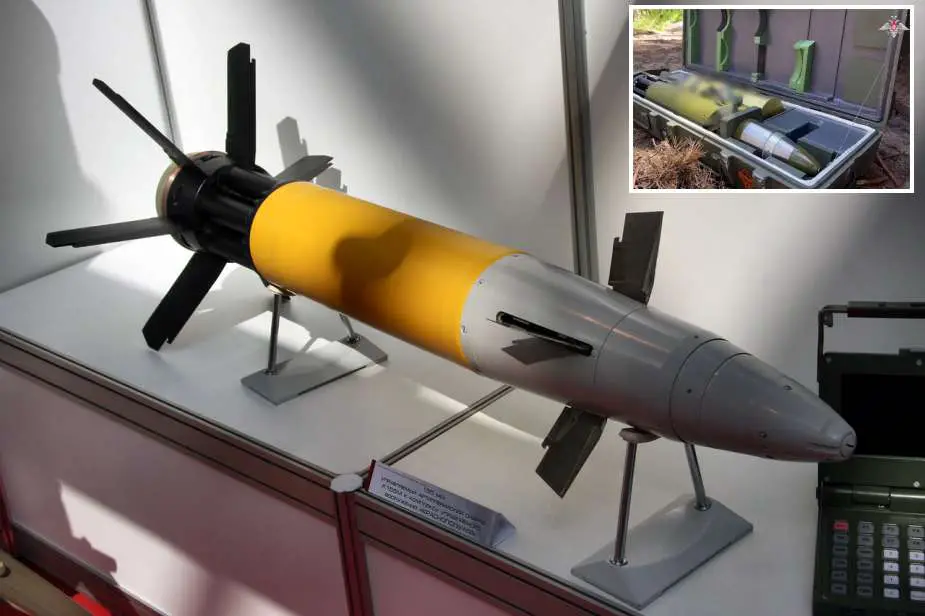- Army
- Conflicts in the world
- Israel - Iran conflict 2025
- Pakistan - India Conflict 2025
- Russia Ukraine War 2022
- Libya conflict day by day
- HAMAS - Israel War 2023
- Operation Serval in Mali French Army
- Sangaris operation Central African Republic
- Sangaris opération militaire République Centreafrique
- Ukraine - Russia conflict
- Syria conflict news
- Defence & Security Industry Technology
- Armies in the world
- Analysis Defense and Security Industry
- Conflicts in the world
- Navy
- Air
Russia ramps up Krasnopol-M2 sniper shell production by 25 times to target Ukrainian tanks
According to reports from Russian media on August 17, 2023, the production of the Krasnopol-M2 laser-guided artillery shell, commonly referred to as the "sniper shell", is set to increase by 25 times in 2024. Vyacheslav Kovalev, the managing director of the Tula KBP enterprise, made this announcement on the Zvezda TV channel. This significant increase in production has been supported by the Ministry of Industry and Trade of the Russian Federation.
Follow Army Recognition on Google News at this link

The Krasnopol-M2 155mm artillery shell, also called the Sniper Shell, deployed in Ukraine, will see a 25-fold production increase. (Picture source: Vitaly Kuzmin and Russian MoD)
The increase in the production of the Krasnopol-M2 coincides with the ongoing conflict in Ukraine. For Russian forces, the availability of this "sniper shell" could provide a tactical tool in their artillery arsenal. The Krasnopol-M2 is designed for precision targeting, which can be crucial in conflict zones with a mix of military and civilian infrastructure. Given that Ukraine has received armored vehicles and other military equipment from various countries, the precision of the Krasnopol-M2 might be seen as a response to counter these assets, aiming to neutralize them with greater accuracy and reduce the potential for broader collateral damage.
On July 5, 2023, the Army Recognition Editorial team highlighted a video released by the Russian MoD, showcasing the deployment of the new Krasnopol-M2 laser-guided artillery munition in Ukraine.
The Krasnopol system, a brainchild of the Tula KBP, encompasses a high-explosive fragmentation guided projectile paired with a laser target designator-rangefinder. This combination ensures precision guidance. The munition is versatile, compatible with all artillery systems, and has a caliber of 152 mm. It boasts a flight range of 20 kilometers and an 8-kilogram warhead.
The Krasnopol-M2 variant stands out with its 155mm caliber and an extended firing range of 26km. It is renowned for its pinpoint accuracy, even against minuscule targets, formidable combat power, and 24/7 operational capability. Both domestic (1D20, 1D22, LCD-3M) and international laser designator-rangefinders, like the DHY307 developed by the French company CILAS, are compatible with the Krasnopol projectile.
The Krasnopol-M2 represents the pinnacle of the Krasnopol guided artillery projectile series, solidifying its position as a cornerstone munition for Russian cannon artillery. Its introduction has equipped the Russian army with outstanding precision artillery ammunition, likened to the accuracy of a sniper rifle. This laser-guided system can pinpoint both stationary and moving targets, making it a dominant force on the Ukrainian front.
Engineered to target both stationary and mobile armored units, the 155mm Krasnopol-M2 is adaptable to self-propelled howitzers like the 2S3 Akatsiya and 2S19 Msta-S. Its primary focus is on neutralizing small ground units, including tanks, direct-fire weapons, and other significant point targets.
The Krasnopol-M2 is a game-changer, marking a shift from conventional area-target fire to precision engagement. It promises first-shot kills, can track moving targets, and operates seamlessly both day and night. Its impressive range spans from 20 to 26 km. The Malakhit automated artillery fire control system (AAFCS) further enhances the Krasnopol-M2 system. This aids in nocturnal target detection and illumination, streamlines firing position surveys, and automates firing data input.
The Krasnopol-M2 ammunition package includes the K155M semi-active laser-guided projectile and a propelling charge. This upgrade amplifies the tactical prowess of Russian artillery units in Ukraine, posing a formidable challenge to Western-donated armored vehicles.
Technical specifications of the Krasnopol-M2 are noteworthy. The projectile weighs 54.3 kg, measures 1300 mm in length, and has a firing range between 3 km and 26 km. The high-explosive fragmentation warhead weighs 22.5 kg, with 11 kg being the explosive content. Its unique takeoff-dive trajectory ensures it approaches targets from above. Its accuracy is commendable, with an 80-90% hit probability within 12 km and a 60% hit rate for targets moving at speeds up to 36 km/h beyond that range.


























